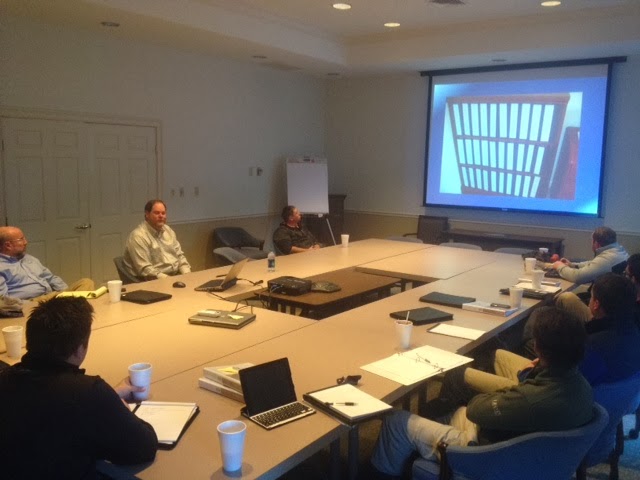In recent years staff has put a considerable effort into improving the playing conditions of the bunkers on all six courses. The bunkers have consistently rated as the lowest section of our member survey and standards reviews, which is not surprising since nobody likes being in a bunker…but after all, they are a Hazard, right? Bill McMahon, of the McMahon Group who executes our club surveys, has surveyed well over 1000 clubs and almost unanimously finds that every member rates bunkers poorly, no matter what course your at...it seems golfers just don't like bunkers. Bunkers are supposed to be penalizing, but we also strive to provide bunkers that are consistently penal from hole to hole on a particular course. We frequently hear that members would like the bunkers to react consistently from course to course, which presents a much greater challenge. Bunker sand characteristics change over time based on a variety of different factors, but primarily correlates directly to the age of the sand. Some of the factors that can affect the condition of the bunkers include:
- Moisture content at the time of play
- Physical characteristics of the sand
- Sub-surface drainage functionality
- Characteristics of the sub-soil
- Contaminants in the sand from heavy-rain “washouts”
- Environment of the bunker (Sun vs Shade, windy vs. protected, etc…)
Those are just some of the things that can affect bunker conditions and controlling these micro-environments can be very challenging and costly. Click
here for an interesting video from the USGA detailing some of the variables to bunker consistency listed above.
The best way to produce bunker consistency between courses, although not feasible, would be to do a mass bunker sand swap on all 6 courses at a singe time so that the bunker sand is at the same stage in it’s lifetime. As we realize this is not an option, we feel the next best solution is to routinely change out bunker sand on a consistent rotation each year. The American Society of Golf Course Architects states that bunker sand has a useful lifespan of about 5-6 years and this works out convenient for The Landings since we have 6 courses. Our current methodology is to replace the sand on one of the courses each summer as we take advantage of excess inventory during the slow golf season on the island.
We also have new “angular” technology sand now that helps to produce better playing conditions. Previously the sand we used was a washed river-sand that was locally available in our area. These sand particles are more rounded in physical shape of the particles and thus have a much higher propensity to produce poor lies and inconsistent conditions.
(This above photo shows the rounded variety of sand, which tend to fit loosely together and cause poor playing conditions)
(The above photo showes the same sand "cracked" into more angular pieces of varying size which fit together tighter and thus produce a firmer lie in a bunker.)
New angular technology takes that same sand and literally “cracks” the
particles into more angular pieces that produce a firmer playing surface. We've been working since 2009 to change our
courses to this new technology sand and have completed 5 of the 6 courses, with
Plantation
being targeted for the summer of 2015.
We frequently hear from members that Plantation bunkers are drastically
different than some of the other courses, and given the information above, it’s
easy to say why…Plantation bunker sand was installed in 2004, 11 years ago,
while Marshwood was brand new last year.
Even when plantation is completed in 2015, Deer Creek’s bunkers will be
near the end of their life- and will play differently than Plantation.
We are by no means making excuses for poor conditions and
there are surely some opportunities to improve bunker play-ability. Routine maintenance is done regularly on our
bunkers to keep them in shape and we are constantly adding sand as needed to
keep the depths right, but there are certainly times when conditions are not
perfect. Interestingly, bunkers are the
2nd most costly piece of the golf course to maintain behind the
greens, yet most would not consider them the 2nd most important
component of the golf course. It is
important to Tyson and I to drive member satisfaction up on course conditions
and bunkers will surely be a major area for improvement.































